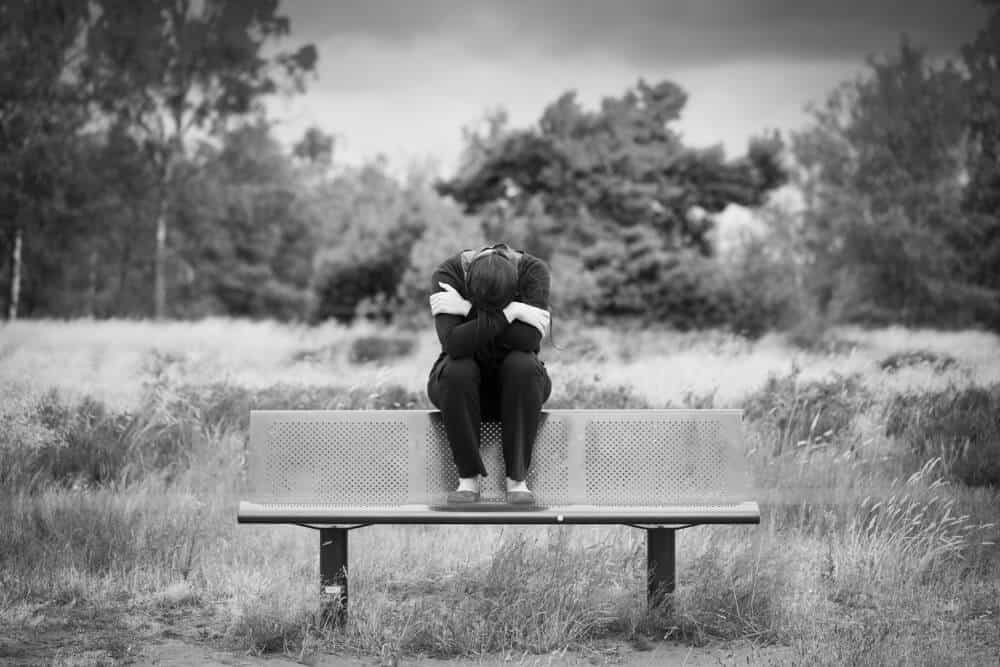
In recent years, the need for more suicide prevention has been foremost in the minds of the mental health community. The suicide rate in the United States increased 33% between 1999 and 2017. The increase was most pronounced between 2006 and 2017. “Suicide ranks as the fourth leading cause of death for people ages 35 to 54, and the second for 10- to 34-year-olds. It remains the 10th leading cause of death overall.”
These statistics indicate that the culture of the United States has changed significantly in some way that makes suicide a more attractive option for people suffering from depression, anxiety, or terminal illness. As such, organizations across the country are increasing suicide prevention programs and training everyday professionals (teachers, school counselors, people who work with teens and children) to be on the lookout for the warning signs of suicidal ideation (when someone is thinking about suicide).
One thing people need to realize is that it doesn’t take a therapist or other mental health professional to recognize the warning signs. Those who are considering suicide will have very specific behaviors or say very specific things that overtly point to the fact that they are suicidal. To succeed in suicide prevention, more and more people need to be educated on the risks and warning signs and what to do when you know someone who is suicidal.
Those at Higher Risk for Suicide
There are some people who have lifestyles or health issues that put them in the high risk category for suicide. Risk factors do not cause or predict a suicide, but they are traits that increase the likelihood that a person “will consider, attempt or die by suicide.”
- Stigma associated with asking for help
- Mental disorders
- Alcohol and drug abuse
- Lack of social support and sense of isolation
- Exposure to others who have died by suicide (in real life or via the Internet)
- Feeling hopeless
- Impulsive and/or aggressive tendencies
- History of trauma or abuse
- Lack of health care, especially mental health and substance abuse treatment
- Major physical or chronic illnesses
- Previous suicide attempt
- Family history of suicide
- Job or financial loss
- Loss of an important relationship
- Easy access to lethal means
- Local clusters of suicide
- Cultural and religious beliefs, such as the belief that suicide is a noble resolution of a personal dilemma
This is not a comprehensive list of all the risk factors for suicide, but it is a list of some of the characteristics of those most at risk for suicide. Does that mean that someone who owns firearms (easy access to lethal means) is automatically suicidal? Of course not. However, that access does affect a person’s decision to plan or actually carry out a suicide.
The number one risk – the stigma associated with asking for help – is the primary reason most people don’t seek help. Being sad, depressed, anxious, or suicidal is often seen as weakness. There are many people who refuse to allow themselves to be diagnosed – what they would call “labeled” – for fear of losing a job, losing friends, or losing a long-term relationship.
There is also a fear of getting better. Many people with depression, anxiety, or other mood or psychiatric disorders, have been struggling for years, some for most of their lives. They simply don’t know any other way to live – and the act of turning their lives upside down to get better is frightening. Suicide seems easier.
For teens, this is an especially sensitive time in their maturation, and they often don’t have any clue how to deal with the changes in themselves or others. When parents are disengaged with their teens, the teens are essentially left alone to deal with their own issues. And teens are in no way equipped to deal with the overwhelming hormonal and emotional changes taking place.
Parents are responsible to ensure that their teen is in a good place mentally and emotionally at all times. If your teen doesn’t want to talk to you about their problems, tell them they should at least talk to their friends to try and work out what issues they are dealing with. It’s important that your teen, if showing signs of emotional distress, is put in touch with someone they trust enough to share their feelings with.
What’s essential is that you recognize these risk factors if you suspect someone you know is contemplating suicide. In order for suicide prevention to be effective, you also need to be aware of the warning signs.
Warning Signs of Suicide
Most people intent on attempting suicide will not simply announce it. They are generally in a place mentally and emotionally where they feel like life has no meaning, they lack purpose, or they just feel lonely or hopeless. If you want to be successful in suicide prevention, learn the warning signs and what their underlying causes could be.
Talking Signs
- Talking about wanting to die or to kill oneself
- Talking about fears of the future
- Talking about feeling hopeless or having no purpose
- Talking about feeling trapped
- Talking about being in unbearable pain
- Talking about being a burden to others
- Talking about seeking revenge
When a suicidal person is making these types of statements, it’s their way of saying, “I need someone to listen to me, please!” These types of statements are all about pain, sadness, despair, and loneliness. Sometimes the best way to ease that pain is to give that person an outlet – a friendly, empathetic ear willing to just listen. Don’t give advice unless it’s asked for.
Behavioral Signs
- Looking for a way to kill oneself
- Increasing the use of alcohol or drugs
- Acting anxious, agitated, or reckless
- Showing rage
- Sleeping too little or too much
- Withdrawing or feeling isolated
- Displaying extreme mood swings
- Dangerous or self-harmful behavior
If these behavioral signs appear, they are often sudden rather than gradual. These are signs that the person could care less if they live or die. If you notice this type of behavior, make a point to speak to the person and ask if there is anything they need or any help they might want. If you truly feel they are in danger of harming themselves or others, get help from professionals to intervene.
Other Signs
There are some warning signs to look for in suicide prevention that may not fall under the talking or behavioral signs. These signs can easily be misinterpreted as an improvement of mood or decision to stop talking about suicide.
- Sudden calmness: Suddenly becoming calm after a period of depression or moodiness can be a sign that the person has made a decision to end his or her life.
- Changes in personality and/or appearance: A person who is considering suicide might exhibit a change in attitude or behavior, such as speaking or moving with unusual speed or slowness. In addition, the person might suddenly become less concerned about his or her personal appearance.
- Making preparations: Often, a person considering suicide will begin to put his or her personal business in order. This might include visiting friends and family members, giving away personal possessions, making a will, and cleaning up his or her room or home. Some people will write a note before committing suicide. Some will buy a firearm or other means like poison.
Approaching a Suicidal Person
One of the key factors in suicide prevention is getting involved. People with supportive family and friends, and who have access to mental health care, are less likely to act on suicidal impulses.
Those who are socially isolated can often feel like no one cares about them and that if they attempted suicide, no one would notice. If someone you know is exhibiting warning signs for suicide, there are positive actions you can take:
- Don’t be afraid to ask if he or she is depressed or thinking about suicide
- Ask if he or she is seeing a therapist or taking medication
- Rather than trying to talk the person out of suicide, let him or her know that depression is temporary and treatable
- In some cases, the person just needs to know that someone cares and is looking for the chance to talk about his or her feelings. You can then encourage the person to seek professional help.
- Offer to help the person find a local doctor or treatment center that deals with suicidal ideation
By intervening with suicide prevention techniques, you could be saving the life of a dear friend, family member, or even a complete stranger. In this society, everyone tends to mind their own business, but that doesn’t mean we should ignore one another – especially a person who is clearly in crisis.
There is also a list of things you absolutely should NOT do if you are dealing with someone who is experiencing suicidal ideation:
- Try to touch them or offer physical comfort (this could be seen as a threat)
- Say things like “It’s not that bad,” “Stay positive” or “Don’t say that”
- Tell them you understand: it is impossible to know how someone else feels
- Keep the conversation focused on the person in trouble – don’t make it about you
- Don’t recommend that they “count their blessings”
- Stay focused on their reality, not comparing it to others
- Never tell them they’ll “go to Hell” if they complete suicide
- Insinuate they are begging for attention
- Tell them they are acting like a victim or martyr
- Don’t threaten them with action (I’m calling 911 if you don’t stop talking like this)
- Don’t minimize their situation
- Trying to encourage them to “be strong” won’t help
- Don’t try to tell them things will get better with time
- Never accuse them of being selfish
All of these responses are incredibly negative. A person dealing with suicidal ideation is already in a negative place. These responses simply add fuel to the fire. Rather than helping the situation, these responses could push the person over the edge and into attempting or completing suicide.
Offering Resources
If you are serious about suicide prevention, always have access to resources on your person. It is disingenuous and futile to try and help someone when you have no idea what to do if you can get them interesting in seeking out help. There are multiple organizations who offer phone lines and online help for those in crisis.
It’s essential to suicide prevention that you have either business cards, brochures, or some type of flyer with contact information on it. That way, either you or the person in crisis can call for help. This would be a course of action if the person you are dealing with is open to getting help.
But, it sometimes happens that the person you want to help is resistant to the idea of getting assistance and/or already has a suicide plan in place. If this is the case, call 911 and get assistance immediately from Crisis Intervention Team (CIT) officers. When you make the call to 911, give the operator your location, the name of the person in need, and tell the operator you specifically need CIT trained officers to help you.
Whether the authorities get involved or a therapist decides to intervene, there are also behavioral health centers in most metropolitan areas that will take people suffering from suicidal ideation. These centers have well-trained medical personnel who are certified in suicide prevention and have the skills to bring the person in need to a safe place.

Conclusion
Suicide prevention is a critical skill that more people in our country need to be certified in. Suicide prevention does save lives. If you want to become certified in a method of suicide prevention, do some research on the internet to find a local program you can take a suicide prevention course from.
Don’t ever dismiss someone talking about suicide. They are talking about it because they really don’t want to die. Offer your help and support to show them that they are not alone. They need healing, and you can help. Don’t be afraid to try to save a life.
If you are struggling with suicide ideation and you have no idea where to turn to, call the Suicide Prevention Lifeline at 1-800-273-8255. If you’re looking for inpatient help with getting your mental health back on track, reach out to Beachside to find out how we can help!




